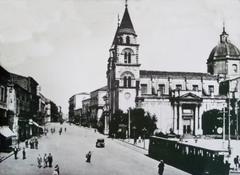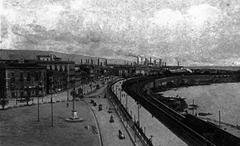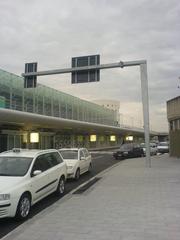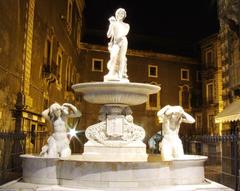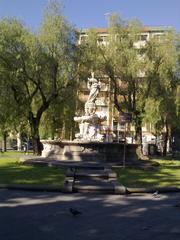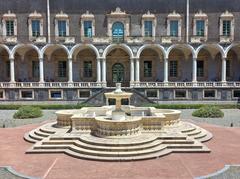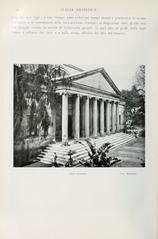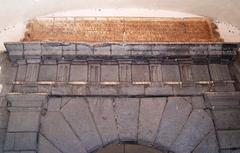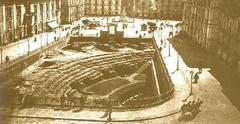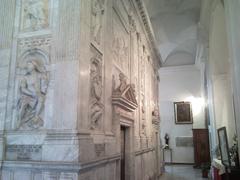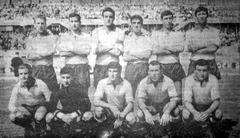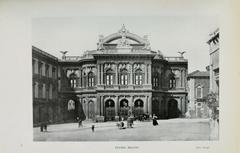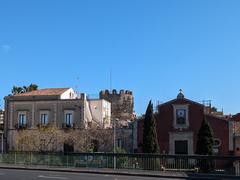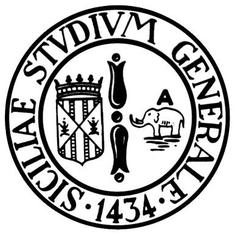Palazzo Pardo Catania: Visiting Hours, Tickets, and Guide to Historical Sites
Date: 14/06/2025
Introduction
Nestled in the vibrant heart of Catania, Italy, Palazzo Pardo—also known as Palazzo Sammartino del Pardo—is a stunning emblem of Sicilian Baroque and the city’s enduring resilience. Erected after the catastrophic 1693 earthquake, the palace not only reflects the architectural ingenuity of its era but also embodies Catania’s renewal and connection to Mount Etna. Its distinctive lava stone façade and ornate details make it a must-see for visitors eager to explore the city’s rich cultural and historical landscape (Balarm).
This guide provides a comprehensive overview of Palazzo Pardo, covering its historical context, architectural features, cultural significance, visitor information, and nearby attractions. Whether you’re an art enthusiast, a history buff, or a traveler seeking authentic Sicilian experiences, this article will help you plan your visit and deepen your appreciation for one of Catania’s most treasured landmarks.
For further reading, see our guides on Catania historical sites and Sicilian Baroque architecture.
Table of Contents
- Historical and Architectural Context
- Exterior and Interior Features
- Integration with Catania’s Urban Fabric
- Cultural and Artistic Highlights
- Restoration and Preservation
- Visitor Information: Hours, Tickets, and Accessibility
- Location and How to Get There
- Practical Visitor Tips
- Nearby Attractions
- Frequently Asked Questions (FAQ)
- Additional Resources and Further Reading
Historical and Architectural Context
Post-Earthquake Reconstruction
Palazzo Pardo was constructed in 1694 as part of Catania’s ambitious Baroque reconstruction following the earthquake that devastated much of the region. The palace’s prominent location at the corner of Piazza Duomo integrates it with the city’s civic and religious heart, alongside landmarks such as the Seminario dei Chierici and Palazzo degli Elefanti (Urbanfile).
Distinctive Sicilian Baroque Features
The palace’s design exemplifies the Sicilian Baroque style, characterized by dynamic facades, intricate stonework, and the use of locally sourced volcanic stone. These elements not only confer structural strength but also create a dramatic visual contrast with the lighter limestone accents, reflecting the city’s close relationship with Mount Etna (Balarm).
Exterior and Interior Features
Façade and Ornamentation
Palazzo Pardo’s façade is renowned for its expressive anthropomorphic brackets supporting wrought iron balconies—a signature of Sicilian Baroque artistry. The ornate main entrance, often bearing the Sammartino del Pardo family crest, asserts the building’s aristocratic heritage. The interplay of volcanic stone and decorative limestone further distinguishes the structure (La Sicilia in Rete).
Interior Layout and Decoration
The palace’s interiors, accessible on special occasions, are organized around a central courtyard, typical of Sicilian palazzi. Highlights include frescoed ceilings depicting mythological scenes, marble or majolica-tiled floors, and elaborately carved woodwork. The ballroom is especially notable for its Rococo details and gilded stucco work (GoAskALocal).
Integration with Catania’s Urban Fabric
Palazzo Pardo’s strategic position at Piazza Duomo places it within walking distance of Catania’s most significant landmarks, including the Cathedral of Sant’Agata and Via Etnea. Its architectural style harmonizes with the neighboring Baroque buildings, reinforcing the visual and cultural unity of the historic center (Urbanfile).
Cultural and Artistic Highlights
The palace has hosted illustrious visitors, such as Johann Wolfgang von Goethe, and functioned as a center for aristocratic salons, concerts, and exhibitions. Its art collections, period furnishings, and decorative programs reflect Catania’s cosmopolitan spirit and the Sammartino del Pardo family’s role in promoting the arts (Balarm).
Restoration and Preservation
Extensive restoration efforts have preserved Palazzo Pardo’s Baroque character, focusing on conserving original materials, repairing frescoes and stuccoes, and adapting the structure for contemporary use. These initiatives ensure the palace’s continued vitality as a cultural and historical asset (Balarm).
Visitor Information: Hours, Tickets, and Accessibility
- Opening Hours: Generally Tuesday to Sunday, 9:00 AM–6:00 PM. Always verify with local sources or the Comune di Catania Turismo for current details, as hours may vary for special events or holidays.
- Tickets: Regular public access to the interior is limited; the exterior is always freely accessible. Occasionally, during events or guided tours, tickets may be required (typically €8–€12, with discounts for students and seniors).
- Accessibility: The main entrance and some exhibition spaces are wheelchair accessible. Be mindful that some historic areas may be less accessible due to steps or uneven flooring.
Location and How to Get There
- Address: Via Garibaldi, facing Piazza Duomo, Catania, Sicily
- Transport: The palace is easily reached on foot from Catania Centrale railway station (about 1.5 km). City buses and taxis serve the area. Parking is limited; consider public transit or nearby parking garages (La Sicilia in Rete).
Practical Visitor Tips
- Best Time to Visit: Morning and late afternoon provide the best lighting for photography. Spring and autumn are ideal for comfortable sightseeing.
- Tours: Consider joining a Baroque-themed walking tour, which often includes Palazzo Pardo as a highlight. These provide context and historical insights.
- Amenities: The Piazza Duomo area is pedestrian-friendly with cafes, restaurants, and public restrooms nearby.
Nearby Attractions
- Catania Cathedral (Sant’Agata): A masterpiece of Norman and Baroque architecture (The Crazy Tourist).
- Fontana dell’Elefante: The city’s iconic elephant fountain, carved from lava stone.
- Teatro Romano: An ancient Roman theater built from local lava stone.
- Monastero dei Benedettini: One of Europe’s largest Benedictine monasteries and a UNESCO World Heritage Site.
- Via Etnea: The city’s bustling main avenue, ideal for shopping and people-watching.
Frequently Asked Questions (FAQ)
Q: Can I visit the interior of Palazzo Pardo?
A: Regular public access to the interior is limited. Interior visits are typically available only during special cultural events or guided tours.
Q: Is there an entry fee?
A: The exterior is free to view. Tickets (around €8–€12) may be required for special events or tours.
Q: Is the palace accessible for wheelchair users?
A: The area around Piazza Duomo is generally accessible, though some interior spaces may be challenging.
Q: Are guided tours available?
A: Yes, especially during festivals or as part of Baroque-themed walking tours.
Q: How do I find out about special openings?
A: Check the Comune di Catania Turismo website or local tour operators for updates.
Additional Resources and Further Reading
- Balarm
- Urbanfile
- GoAskALocal
- Scent of Sicily
- Great Sicily
- Voyage Tips
- Untold Italy
- PlanetWare
- La Sicilia in Rete
- UNESCO World Heritage
Plan Your Visit
Palazzo Pardo is a living testament to Catania’s Baroque heritage and cultural vitality. Whether you explore its impressive façade, join a guided tour during a festival, or simply soak in the atmosphere of Piazza Duomo, your visit will offer a memorable encounter with the city’s rich history. Enhance your experience by downloading the Audiala app for guided tours, event updates, and exclusive content, and follow local tourism resources for the latest news.
